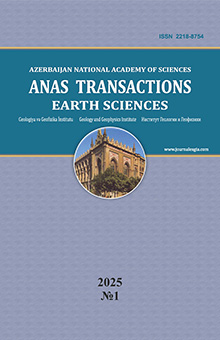Application of machine learning methods and neural networks in the objectives of lithofacies mapping and reservoir properties assessment: analysis and selection of methods
Abetov A.E.1, Seitzhanov A.K.2, Samenov Ye.R.1
1 Satbayev University, Kazakhstan 22, Satpayev Str., Almaty, 050013
2 Kazakh-British Technical University, Kazakhstan 59, Tole Bi Str., Almaty, 050000: ansar.seitzhanov.98@mail.ru
DOI: 10.33677/ggianas20250100140
Summary
The paper discusses the application of artificial intelligence (AI) methods to address challenges in lithofacies mapping and the assessment of reservoir properties. The choice of an AI method depends on the nature of the data, objectives of the study (such as classification, regression, clustering, or image segmentation), and requirements on the final interpretation and modeling results. An analysis of various machine learning (ML) algorithms including the support vector machine (SVM), random forest (RF), neural networks, etc. were conducted. Evaluated effectiveness of each method was evaluated on the basis of open-source data and geological datasets. Advantages and disadvantages of these methods were analyzed and factors influencing on the selection of an appropriate AI method were identified. Classification of geological problems and corresponding AI methods, encompassing SVM, RF, linear and polynomial regression, k-means clustering, hierarchical clustering, and convolutional neural networks (CNN) were presented. The article also introduces open-source ML platforms such as TensorFlow, PyTorch, and Keras along with factors influencing on the selection of the optimal AI method for lithofacies analysis and reservoir property assessment. Recommendations to select the most suitable AI methods for specific objectives were provided. The importance of data volume and quality in selection of AI method and prevention of model overfitting was emphasized.
Keywords: artificial intelligence, machine learning, classification of geological problems, linear and polynomial regression, clusterization of lithofacies, reservoir properties
REFERENCES
Brown A.R. Interpretation of Three-Dimensional Seismic Data. Translated from English. Society of Exploration Geophysicists (SEG). Moscow, 2011 (in Russian).
Dobrynin V.M., Vendelstein B.Yu., Kozhevnikov D.A. Interpretation and modeling of geophysical data. Nedra. Moscow, 2009, 456 p. (in Russian).
Easyoffer.ru. What is model overfitting. URL: https://easyoffer.ru/ question/5440 (accessed: 10.10.2023).
Hastie T., Tibshirani R., Friedman J. The elements of statistical learning: Data mining, inference, and prediction. 2nd ed. Springer. New York, 2009, 745 p.
Introduction to machine learning. URL: https://habr.com/ru/post/ 448892/ (accessed: 3.09.2019) (in Russian).
Keras: The Python Deep Learning API. Official Documentation. URL: https://keras.io/.
Kolbikova E.S. lithofacies analysis and prediction of properties based on geophysical and seismic data using machine learning methods.: Roxar Paradigm – Software and Solutions LLC. Moscow, 2021, 120 p. (in Russian).
KPMG Caucasus and Central Asia. Technological Research 2024. KPMG. February 2025.
Merembayev T., Kurmangaliyev B., Bekbauov B., Amanbek Ye. A comparison of machine learning algorithms in predicting lithofacies: Case studies from Norway and Kazakhstan. Energies. Vol. 14, No. 7, 2021, p. 1896, DOI: https://doi.org/10.3390/en14071896.
Neural networks for beginners. Part 1. Habr. URL: https://habr.com/ru/articles/312450 (accessed: 10.10.2023) (in Russian).
Neural networks. Psy.Wikireading. URL: https://psy.wikireading.ru/12215 (accessed: 10.10.2023) (in Russian).
Ng A. Artificial Intelligence (AI) for Everyone. Deep Learning.AI. 2023, URL: https://www.deeplearning.ai (accessed: 10.10.2023).
Priezzhev I.I., Taikulakov E E., Kayumov I. L., Leonov A.V., Gorbach D.A., Miroshkin V.G., Ovechkina V.Yu. Direct neural network prediction of reservoir properties based on seismic data: A case study of clinoform deposits in Western Siberia. PRONeft. Professionalno o nefti, Vol. 8, No. 2, 2023, pp. 28-39, DOI: https://doi.org/10.51890/2587-7399-2023-8-2-28-39 (in Russian).
Priezzhev I. I., Veeken P. C. H., Egorov S.V., Nikiforov A.N., Strecker U. Seismic waveform classification based on Kohonen 3D neural networks with RGB visualization. First Break, Vol. 37, No. 2, 2019, pp. 37-43.
Scikit-learn: Machine Learning in Python. Official Documentation. URL: https://scikit-learn.org/stable/user_guide.html.
Shamaev S.D. Application of artificial intelligence methods in processing and interpretation of geophysical data. Izvestiya UGGU, No. 1 (65), 2022, pp. 86-101 (in Russian).
Simplified explanation of the new Kolmogorov-Arnold network from MIT. Habr. 2024. URL: https://habr.com/ru/articles/ 817547 (accessed: 10.10.2023) (in Russian).
DOI: 10.33677/ggianas20250100140
